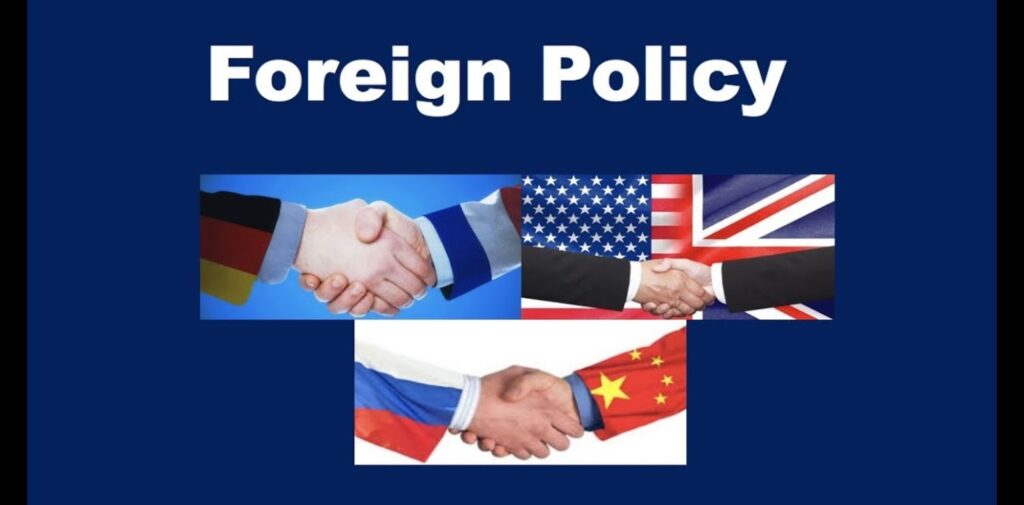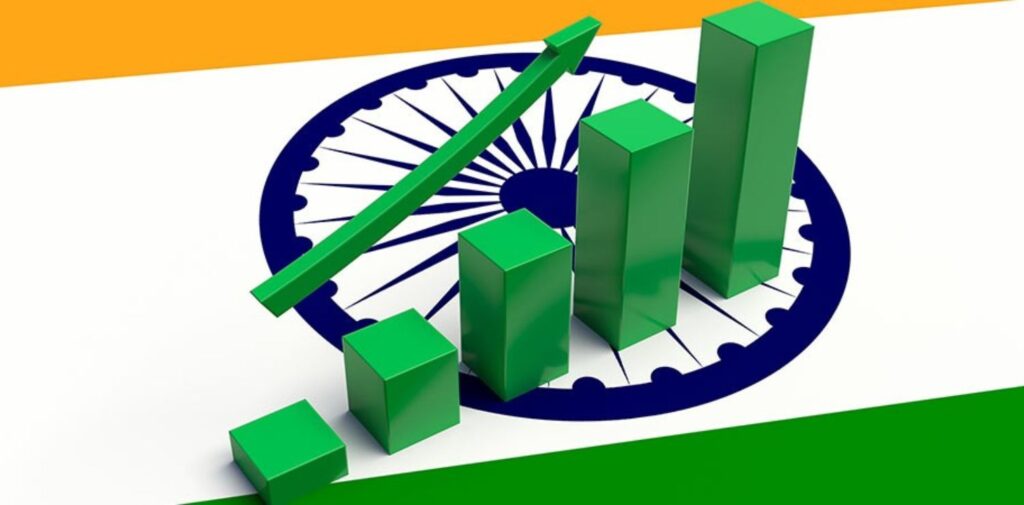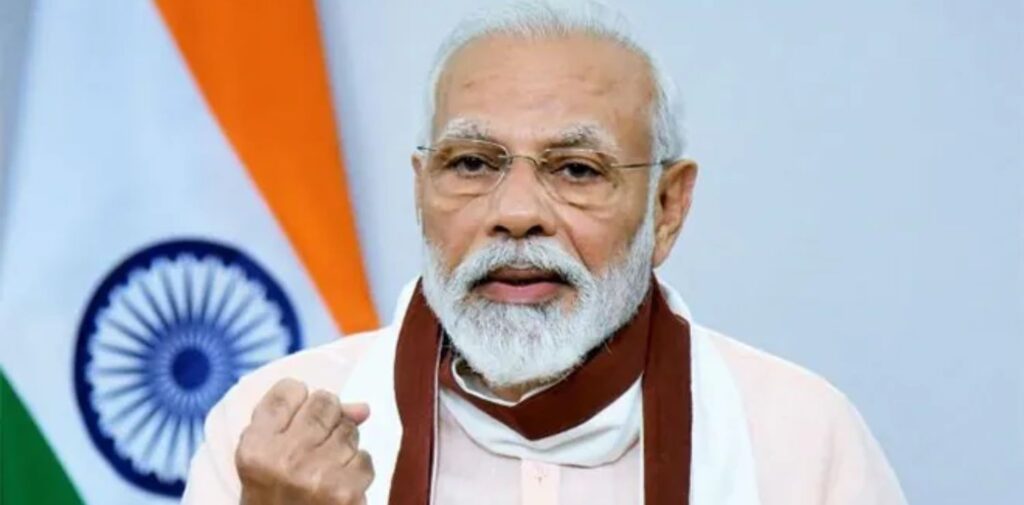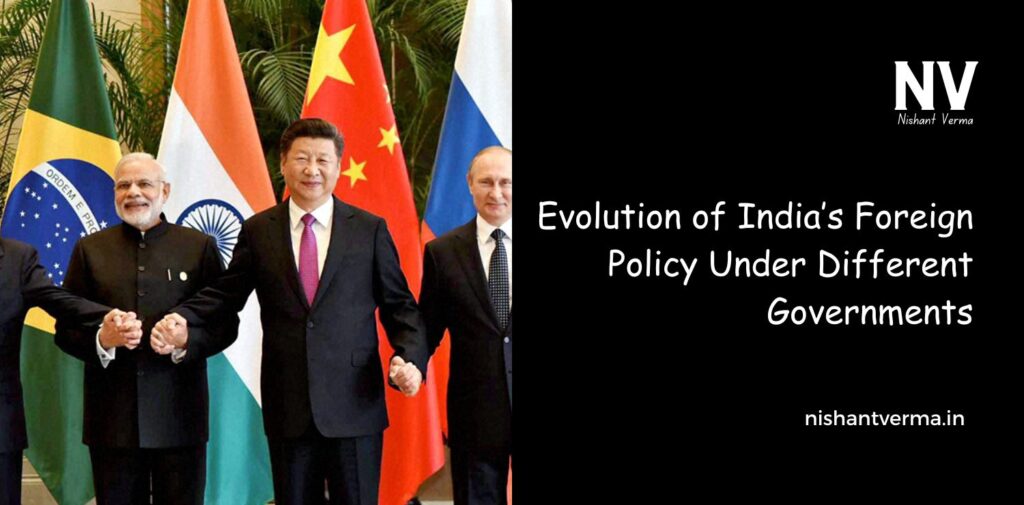India is a big and powerful country with a rich history and diverse culture. When it became independent in 1947, it had to develop its own foreign policy. Foreign policy is how a country interacts with other countries and makes decisions on matters like trade, defense, and peace. India’s foreign policy has changed over time, and it has been shaped by different governments, their leaders, and the needs of the country. Let’s take a simple look at how India’s foreign policy has evolved under different governments.
What is Foreign Policy?
Before we begin, let’s first understand what foreign policy is. Foreign policy is a set of rules or actions that a country follows to maintain good relations with other countries. It includes how a country deals with its neighbors, international organizations, and even other countries far away. It is about making decisions that benefit the country’s interests, like ensuring security, economic growth, and peace.
In India, the foreign policy is made by the Prime Minister and the President, but the Ministry of External Affairs (MEA) plays an important role in managing it.
Now, let’s look at how India’s foreign policy has changed over the years under different leaders and governments.

The Early Years: Jawaharlal Nehru’s Vision
When India became independent in 1947, it was a young nation with many challenges. Jawaharlal Nehru, India’s first Prime Minister, set the stage for India’s foreign policy. He wanted India to be a peaceful and independent country that was not involved in the fights between the powerful nations of the world.
Nehru believed in Non-Alignment, which meant that India would not take sides in the Cold War between the United States and the Soviet Union. Instead, India focused on building good relations with all countries and played a key role in forming the Non-Aligned Movement (NAM). This was a group of countries that chose not to align with any superpower. Nehru also believed in promoting peace and solving problems through dialogue, rather than using force.
During his time, India focused on supporting freedom movements in other countries, especially in Africa and Asia. Nehru also worked hard to strengthen India’s position in the world, encouraging countries to come together for peace and cooperation.
The 1970s and 1980s: Shifting Focus Under Indira Gandhi
After Nehru, Indira Gandhi, India’s first woman Prime Minister, took charge. She became the leader in the 1970s and brought her own ideas to India’s foreign policy. Indira Gandhi’s government was more focused on strengthening India’s security and building relationships with powerful countries.
In 1974, under Indira Gandhi’s leadership, India conducted its first nuclear test. This was a significant moment because it showed the world that India was capable of building nuclear weapons. This test helped India to gain recognition as a powerful nation, although it also caused tensions with some other countries.
Indira Gandhi also played a major role in the Bangladesh Liberation War in 1971, which led to the creation of Bangladesh as a separate country. India supported Bangladesh’s fight for independence, and this made India’s relationship with its neighbor, Pakistan, more complicated.
While Indira Gandhi focused on India’s security and defense, she also worked to maintain good relations with other countries. She took India’s foreign policy in a more assertive direction, standing up for India’s interests and security.

The 1990s: Economic Reforms and New Alliances
The 1990s were a time of change for India. The world was becoming more connected, and countries were forming new alliances. In 1991, India went through important economic reforms, which changed the way India interacted with the world.
Under Prime Minister P.V. Narasimha Rao, India opened up its economy to global trade. This meant that India began building better relations with countries around the world, especially in the areas of business and trade. Rao’s government focused on improving India’s relations with Western countries like the United States, as well as with countries in Asia and Europe.
India also started to become more active in international organizations like the United Nations and the World Trade Organization (WTO). It began working with these organizations to shape global policies on trade, security, and development.
One of the key moments in the 1990s was the signing of the India-U.S. nuclear deal in 1998, which made India a recognized nuclear power and allowed India to buy nuclear technology from other countries. This was a major shift in India’s foreign policy because it opened up new opportunities for cooperation with the United States and other countries.
The 2000s: Growing Global Influence
In the early 2000s, Prime Minister Atal Bihari Vajpayee took India’s foreign policy to a new level. Under his leadership, India began to focus more on becoming a global power.
Vajpayee worked on building strong relationships with countries like the United States, Russia, China, and Japan. He also focused on strengthening India’s relationship with its neighbors in South Asia, such as Sri Lanka, Nepal, and Bangladesh.
One of the biggest events during Vajpayee’s time was the Kargil War with Pakistan in 1999, which caused tension between the two countries. Despite this, India continued to focus on maintaining peace and stability in the region, even as it worked to improve its ties with the world.
Vajpayee’s government also focused on economic growth, encouraging foreign investments, and improving trade relations with countries all over the world. India’s foreign policy became more focused on economic cooperation, security, and international partnerships.
The 2010s: Strengthening India’s Role in the World
In the 2010s, Prime Minister Manmohan Singh continued India’s focus on global growth. Under his leadership, India’s foreign policy took a more economic-oriented approach. India wanted to become a stronger player in the global economy and improve its relations with major countries like the United States, China, and European Union.
Manmohan Singh’s government worked hard to expand trade and attract foreign investments into India. India also worked with international organizations like the BRICS (Brazil, Russia, India, China, and South Africa) to create a platform for emerging economies to come together and promote global growth.
The government also focused on peace-building and cooperation in the South Asian region. India worked with its neighbors and other countries to improve security and address regional issues.

The 2020s: Under Narendra Modi
In 2014, Prime Minister Narendra Modi came to power, bringing a new energy to India’s foreign policy. Modi’s government has focused on making India a global leader and strengthening its position on the world stage.
Modi has emphasized building closer ties with countries like the United States, Japan, and Australia, forming the Quad group (United States, India, Japan, and Australia) to focus on shared interests like security, trade, and a free Indo-Pacific region.
India has also continued to strengthen its ties with its neighbors, especially Bangladesh, Sri Lanka, and Nepal, and has been actively involved in multilateral organizations like the United Nations and the World Trade Organization.
Under Modi, India’s foreign policy has become more assertive and focused on national security, especially in relation to China and Pakistan. India has also taken steps to increase its influence in the Indian Ocean region, which is an important area for trade and security.
Conclusion
India’s foreign policy has evolved over time, from the peaceful and non-aligned vision of Jawaharlal Nehru to the more assertive and economically-focused policies of Narendra Modi. Each government has shaped India’s position in the world in different ways, depending on the challenges and opportunities of the time.
While India continues to focus on peace, security, and economic growth, it also remains committed to maintaining good relations with countries around the world. As the world continues to change, India’s foreign policy will keep adapting to meet new challenges and opportunities, ensuring that the country remains strong, secure, and respected on the global stage.




